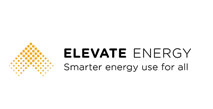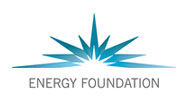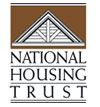SAHLLN Resource Hub
The SAHLLN Resource Hub is a central repository for information on financing energy and water efficiency and renewable energy in multifamily affordable housing properties. These resources are recommended by members of our network of affordable multifamily housing lenders, including Community Development Financial Institutions (CDFIs), housing finance agencies (HFAs), major financial institutions, and specialized green financing entities. Please help us grow this resource hub by submitting a resource!
The Navigator is an online tool that helps public and private sector organizations find financing solutions for energy efficiency projects.Developed by the US Department of Energy’s Better Buildings Initiative, the Navigator helps users explore a wide array of financing choices and identify relevant financing options for their energy efficiency...
A growing number of housing providers, utility-sector program administrators, and investors are working to combine energy efficiency improvements with solar systems in affordable multifamily buildings. Pairing energy efficiency with rooftop solar systems can reduce energy costs for these buildings and their low-income residents. This report...
These slides were presented during the May 3rd, 2018 SAHLLN webinar on how to use the portfolio-level approach to financing solar across multifamily affordable housing properties. On this webinar, Jared Lang, Assistant Vice-President for Sustainability at NHT-Enterprise, provided an overview of how the portfolio-level solar model was created and...
To facilitate building owners’ access to renewable energy sources that provide electricity cost stability and improved building performance, NHT-Enterprise pioneered a new model for installing solar on multifamily affordable housing properties. The model involves housing owners setting up an independent entity to purchase and own solar PV systems...
C-PACE is a financing structure that enables owners of commercial, industrial and multifamily residential properties to obtain affordable, long-term funds for 100% of the cost of energy and water efficiency retrofits (as well as for distributed generation investments). It works by allowing building owners to finance qualifying improvements by...
This is a first study of the effects of building-level energy consumption and the time series risk of the energy pricing on the default risk of commercial mortgages. We apply measures of energy consumption using information on building-level source energy use intensity (EUI) and site EUI obtained from a unique data set that merges the building-...
Our Ready to Respond Tools for Resilience were developed to help affordable housing organizations make their buildings resilient, prepare their staff to handle emergencies and ensure their residents remain safe. View the Ready to Respond: Strategies for Multifamily Building Resilience webinar for an overview of the background and...
Current clean energy financing models do not sufficiently serve low-income communities. As a result, solar+storage projects are vastly underrepresented in affordable housing and community facilities, meaning that low-income communities are unable to enjoy the benefits of clean, affordable and resilient power.The paper presented in this webinar...
Current clean energy financing models do not sufficiently serve low-income communities. As a result, solar+storage projects are vastly underrepresented in affordable housing and community facilities, meaning that low-income communities are unable to enjoy the benefits of clean, affordable and resilient power.This paper describes emerging finance...
Historically, the low-and moderate-income (LMI) market has been underserved by solar photovoltaics (PV), in part because of the unique barriers to participation in the PV market that LMI residents face. In addition to other barriers, they often rent, have lower credit scores, and have limited funds to make up-front investments in PV. Some states...





